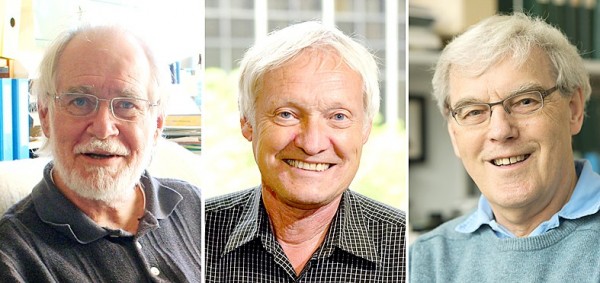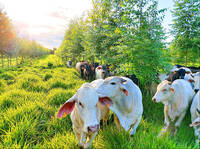《TAIPEI TIMES》Chemistry Nobel prize awarded for imaging advances

A composition photo of handout pictures provided by University of Lausanne, Columbia University and MRC Laboratory of Molecular Biology of the University of Cambridge shows (L-R) Swiss scientist Jacques Dubochet, German scientist Joachim Frank and British scientist Richard Henderson who have been awarded with the Nobel Prize in Chemistry 2017. Photo: EPA
/ Reuters, STOCKHOLM
Scientists Jacques Dubochet, Joachim Frank and Richard Henderson yesterday won this year’s Nobel Prize in Chemistry for developing cryo-electron microscopy, which simplifies and improves the imaging of biomolecules.
Cryo-electron microscopy has enabled scientists to fill in previously blank spaces in research, generating images of everything from proteins that cause antibiotic resistance to the surface of the Zika virus.
“This method has moved biochemistry into a new era,” the Royal Swedish Academy of Sciences, which awards Nobel prizes, said in a statement.
The awarding brings a 9 million kronor (US$1.1 million) prize.
“Researchers can now freeze biomolecules mid-movement and visualize processes they have never previously seen, which is decisive for both the basic understanding of life’s chemistry and for the development of pharmaceuticals,” the academy said.
Scottish-born Henderson used an electron microscope to generate a 3D image of a protein at an atomic resolution, showing the potential of the technology.
His breakthrough was further developed by German-born Frank, while Dubochet of Switzerland used rapidly frozen water to preserve the natural shape of the biomolecules.
Chemistry is the third of this year’s Nobel prizes after the winners of the medicine and physics prizes were announced earlier this week.
The award passed over one of the highest-profile fields of research, the so-called CRISP Cas9 gene editing technology that earlier this year allowed US scientists to alter genes in a human embryo to correct a disease-causing mutation.
The chemistry award has sometimes been overshadowed by the towering reputations of physics winners.
新聞來源:TAIPEI TIMES




















